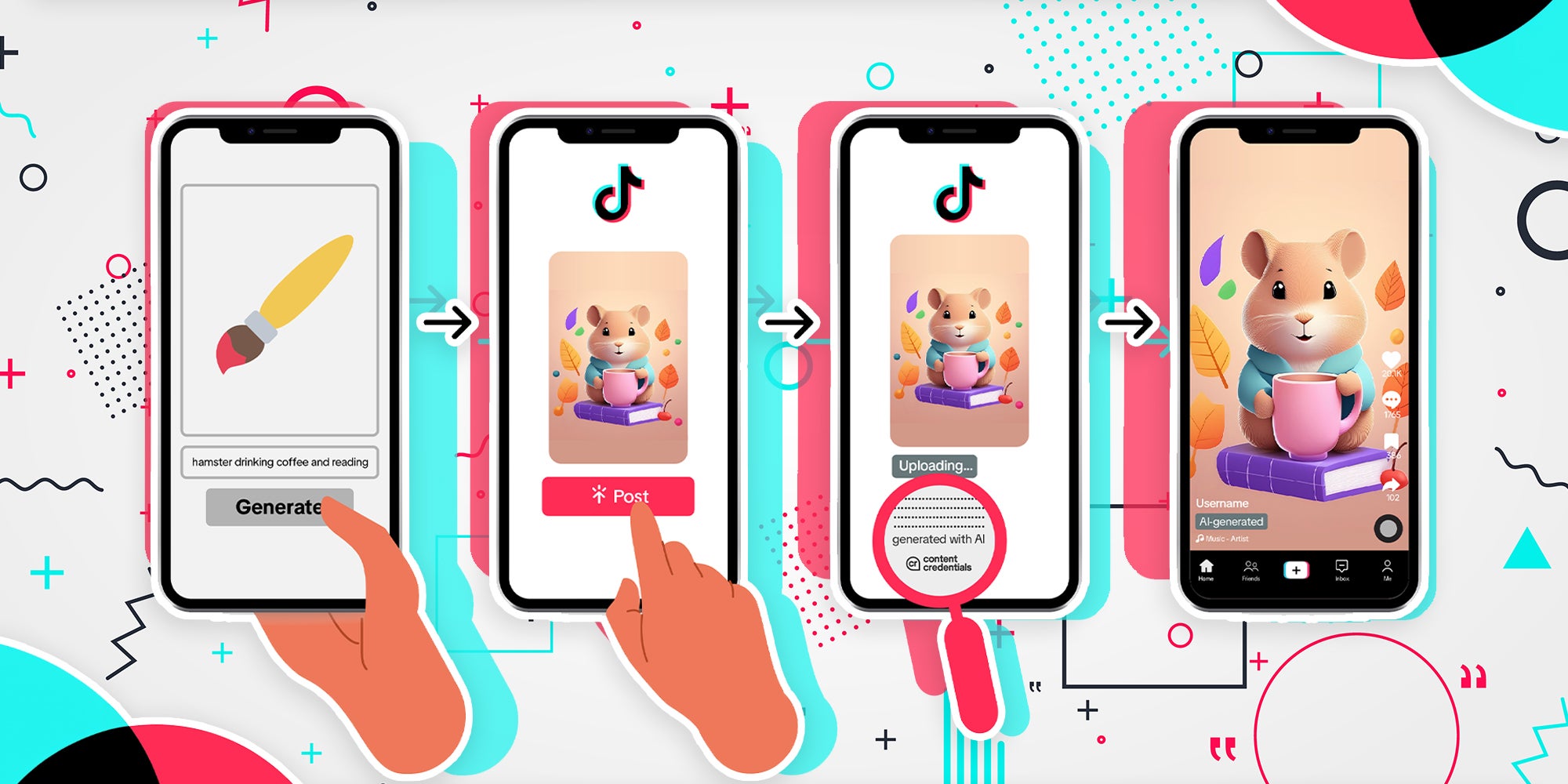
TikTok is going to start automatically labeling AI-generated content that was made on some other platforms, such as OpenAI’s DALL.E3.
To do this, according to a May 9 announcement, TikTok is implementing a piece of technology called Content Credentials. This was made by the Coalition for Content Provenance and Authenticity (C2PA).
Microsoft, Adobe and OpenAI are already using Content Credentials, and Google has also pledged to participate. This means that if a user posts content that was made with a generative AI tool by any of these companies, it will automatically have a label attached to it on TikTok.
How do you label AI generated content on TikTok?
In the past, TikTokers could only disclose content as AI-generated with text or a hashtag. But now, TikTok is aiming to automatically detect and give AI content a public label with Content Credentials.
Content Credentials work by attaching metadata to AI-generated content, which TikTok can then use to instantly recognize AI content. According to TikTok, the company is the first video-sharing platform to begin to implement this technology. (Although Meta did announce in February that it will also eventually utilize technology by C2PA).
The tool, which is currently being rolled out globally, works on AI-generated images and videos. TikTok says the tool will also be attached to AI-generated audio in the coming days.
Why is TikTok rolling out automatic AI labels?
In a conversation with TechCrunch, TikTok said that it sees the change as another way of ensuring AI-generated content is being labeled while also taking some of the pressure off creators having to label the content themselves.
Speaking to ABC News, Adam Presser, TikTok’s Head of Operations & Trust and Safety said: “Our users and our creators are so excited about AI and what it can do for their creativity and their ability to connect with audiences.”
“And at the same time, we want to make sure that people have that ability to understand what fact is and what is fiction.”




